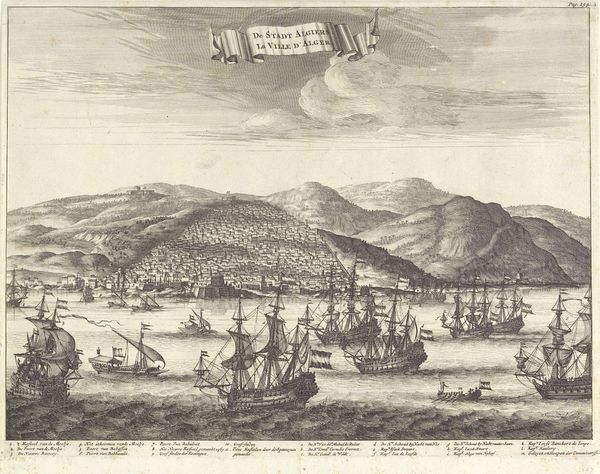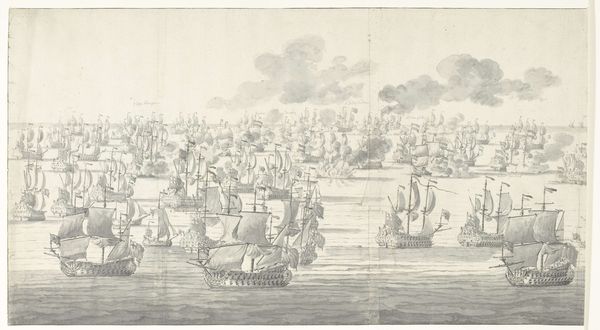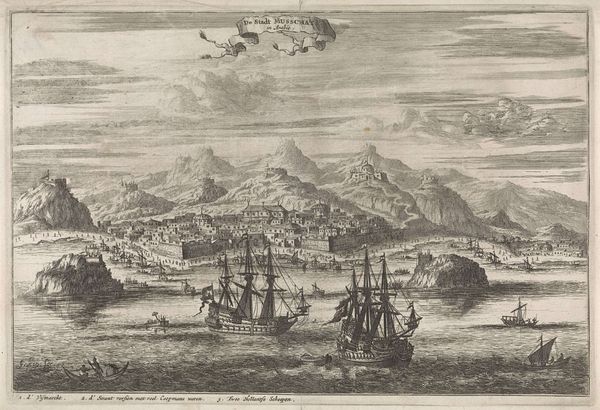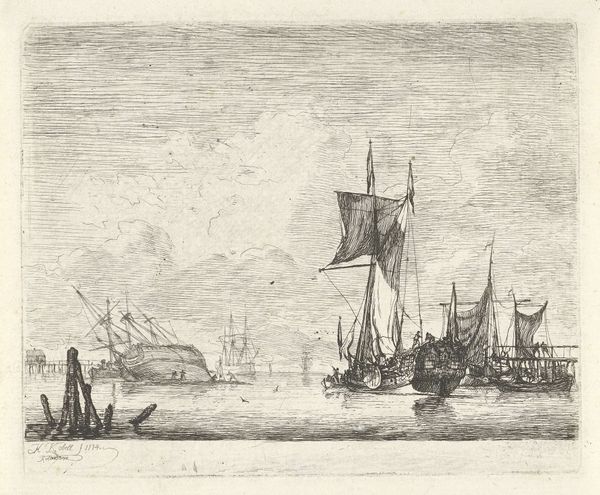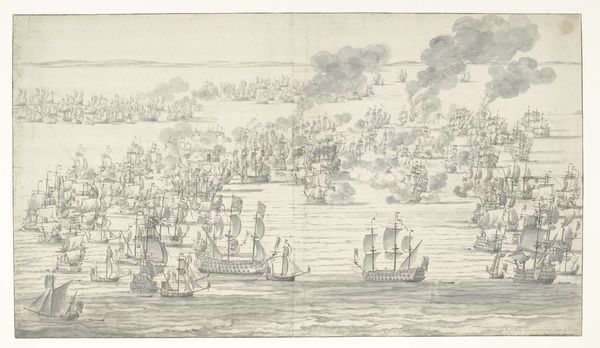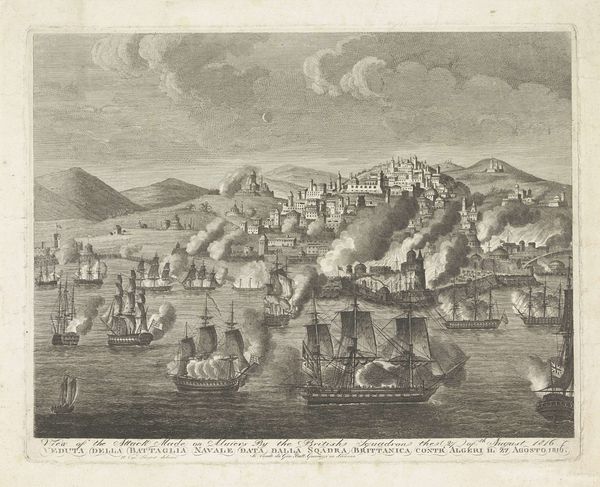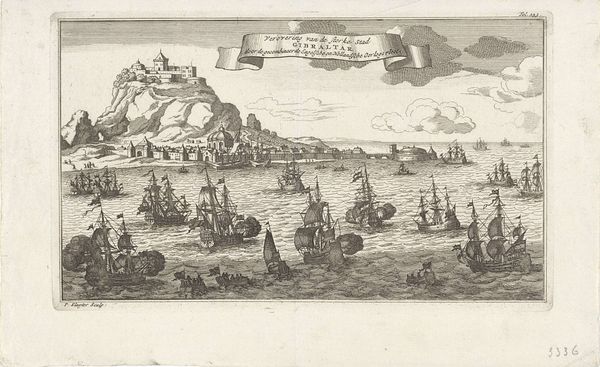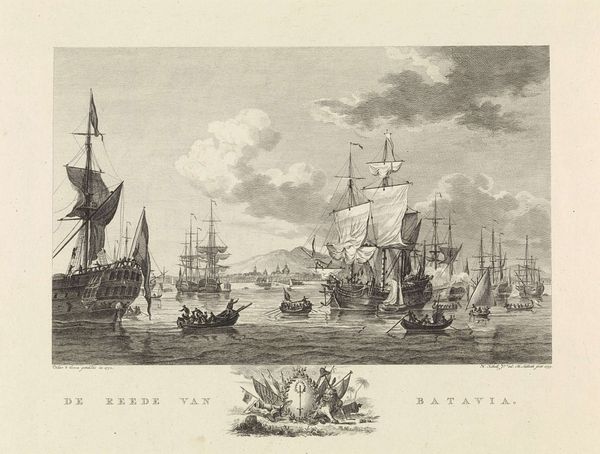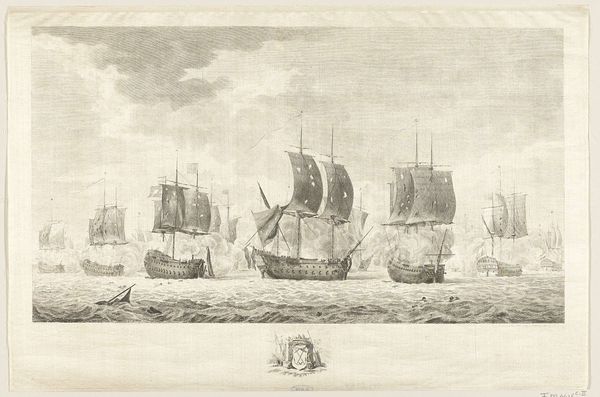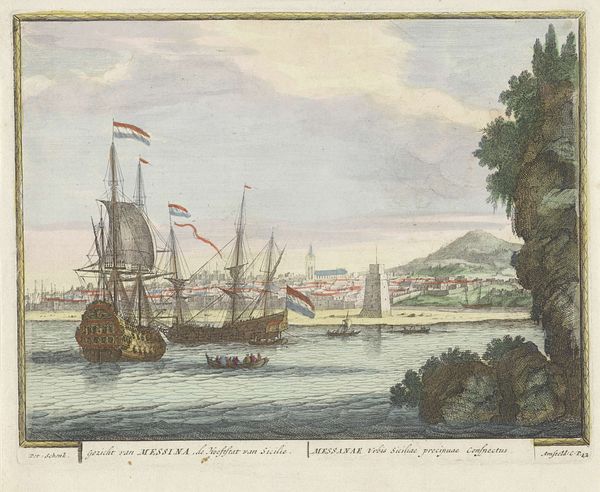
print, engraving
#
dutch-golden-age
# print
#
landscape
#
cityscape
#
engraving
Dimensions: height 145 mm, width 205 mm
Copyright: Rijks Museum: Open Domain
Curator: Welcome, everyone. We are looking at Jan Bulthuis’s print, "The Dutch Fleet off the Coast of a Foreign Land," dating from between 1765 and 1801. It's an engraving and is part of the Rijksmuseum's collection. Editor: What strikes me is how orderly and meticulously crafted this composition is. The sheer number of vessels at bay, coupled with the city sitting so neatly on the hill creates a feeling of impressive industrial planning. Curator: Yes, and if you look at the Dutch fleet—dominant maritime power in the 18th century—its impact extended globally, initiating interactions and, in many instances, exerting dominance through trade, and colonization. These encounters had huge, transformative social and political repercussions on those lands. Editor: The material conditions here are certainly indicative of this dominance. Engraving requires precision and skill. Think about the engraver's tools and their control over the metal plate to create this image for distribution. Curator: Right. Bulthuis was illustrating the extent of Dutch mercantile influence. The flags each vessel is proudly brandishing show Dutch sovereignty over foreign territories. Editor: I wonder about the labor involved. The shipbuilding, the navigation... all rely on specialized workers and often, on exploitative systems. The very sea in the image, in fact, was the primary route by which slaves were traded from the 16th to 19th centuries. Curator: Precisely. The "foreign land," a generic cityscape perched above the shore, feels deliberately non-specific. It enables viewers to assign their preconceptions, almost functioning as a mirror reflecting the contemporary biases surrounding interactions with the unfamiliar. This wasn’t neutral exchange. Editor: The way everything is arranged suggests a story about control. About carefully extracting resources from some "other" location. It speaks about trade, commerce, colonial ambition, as it depends on extraction, enslavement and ecological degradation. Curator: This perspective underscores the deep entanglement of power, representation, and identity. These ships are more than just vehicles. Editor: Indeed. So this piece compels me to consider art making as tied inextricably to larger material networks of exchange, exploitation, and power. It helps us re-evaluate whose stories are typically centered. Curator: Right, acknowledging this image's production alongside these socio-political complexities provides space to think deeply about how histories intertwine.
Comments
No comments
Be the first to comment and join the conversation on the ultimate creative platform.
